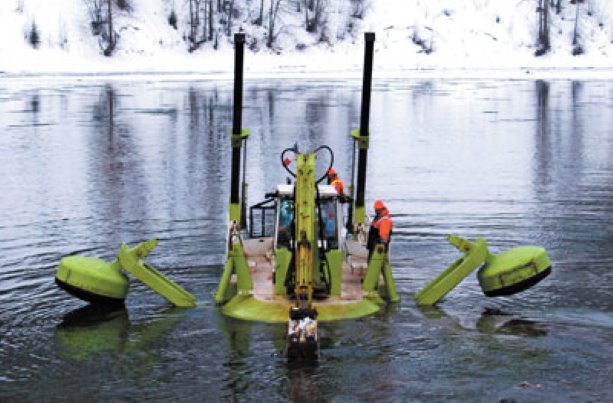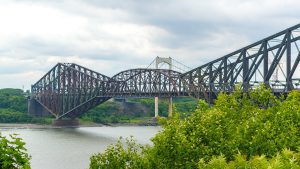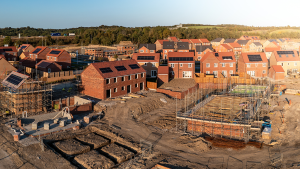The amphibious excavator that has been working around the clock to mitigate the impact of ice shifts and surges on the Nechako River has been loaded onto a flat bed truck to begin the long ride home.
Heavy equipment
The amphibious excavator that has been working around the clock to mitigate the impact of ice shifts and surges on the Nechako River has been loaded onto a flat bed truck to begin the long ride home.
The machine, known as the Amphibex, arrived in Prince George on Jan 18.
The 37-foot long vessel uses a back-hoe like shovel to break up and move ice.
Amphibex attempted to break up the foot of the jam, where water is backed up at the juncture of the Fraser and Nechako rivers.
Work began on Jan.19, and the machine worked 24 hours a day until Jan. 27.
“Amphibex had a very positive effect in helping open up an ice channel in the lower Nechako River,” said Kevin Brown, liaison officer for the city of Prince George.
“It’s all about keeping that channel open and it’s a beauty.”
The combination of natural erosion, ice shifts and progress made by the amphibious excavator opened a channel that was 50 meters wide in some spots and about five kilometers in length. The open channel means that ice breaking away from the jam on either side of the channel can flow freely down the Nechako river and into the Fraser.
The Amphibex demonstrated that it can help with the difficult ice conditions. However, after nine days of work, Amphibex was given the day off on Jan 28, so city officials could re-assess the situation.
“We don’t want any more ice from the Nechako River in the Fraser. We don’t want to solve one problem by creating another,” Brown said. “The problem is that the ice came out of the Nechako River, went into the Fraser and caused the Fraser to freeze. There is no longer an open channel on the Fraser. The ice is jammed up a short distance from the confluence of the two rivers up to the CN Rail bridge.”
Eco Technologies, the owner of the Amphibex, had a 10 day contract with the city that ran through to Jan 28.
The New Brunswick-based company is being paid $375,000 by the Provincial Emergency Program (PEP) for the duration of the contract. City officials decided not to renew the contract with Eco Technologies because of the problems associated with the freezing of the Fraser River.
An open channel developed on the Fraser River on Jan. 14, due to unseasonably warm weather and the open water made it possible for the PEP to approve the use of the Amphibex. The machine was transported from Montreal on a flatbed truck and began the return trip on Jan. 30.
Now that the Amphibex is finished its contract, the city of Prince George is turning to a second option in their plan to mitigate flooding of the lower Nechako River.
The second option is the construction of a hot water pipeline, which will discharge warm water into the Nechako and keep the channel open.
The pipeline was completed on Jan 28.
The Amphibex was developed by Normrock Industries, in co-operation with Environment Canada’s St. Lawrence Centre, the Ministry of the Environment in Quebec, and the Federal Office of Regional Development in Quebec. The Amphibex was designed to control and break up ice.
The machine has an ice cutter attachment. The circular saw bolts to the back and will cut up to 0.5-meter (1.6-foot) thick ice at a rate 0.37 km/hr (0.2 mph).
The amphibious excavator has been used extensively in Canada on rivers around the St. Lawrence Seaway and in Manitoba.
The machine is suitable for use in all types of water bodies and can take on a wide range of tasks. These tasks include; preventing and breaking up ice jams, leaning and restoring contaminated waterways, installing water pipes, pipelines and submarine cables, cleaning wastewater treatment ponds, controlling vegetation, developing peat lands, creating wildlife habitats.











Recent Comments
comments for this post are closed